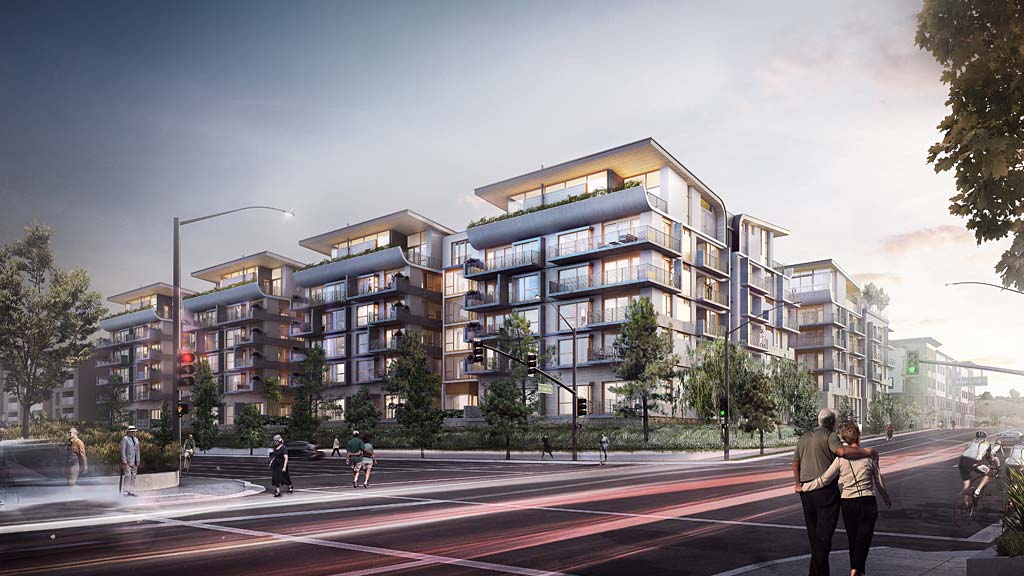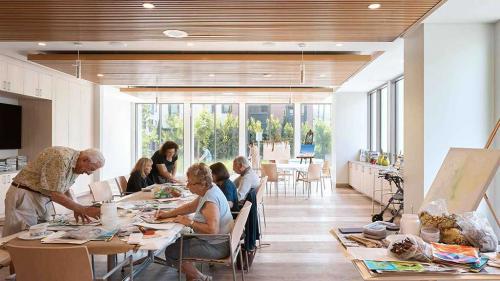
BABY BOOMERS DON'T CONSIDER THEMSELVES AS "OLD", THEY HAVE MASSIVE BUYING POWER, AND THEY "DON'T VIEW AGING AS A TIME OF PHYSICAL DECLINE." GENSLER FINDS OUT HOW THIS DEMOGRAPHIC IS RAPIDLY REDEFINING AGED CARE.
What We Did
We investigated and documented trends for baby boomers and the aging market, focusing on demographic shifts and the unique physical, mental, and social needs of this population. We read and summarized research findings from 170 documents produced by government organizations, professional associations, academia, corporations, and the popular press. We also interviewed industry experts and attended panel discussions and conferences on aging in place. Our goal was to identify current innovations and industry trends in senior-living housing types, and to document design opportunities to create successful active aging communities.
The Context
Today’s 50- and 60-year-olds don’t see themselves as “old” and don’t view aging as a time of physical decline. They’re eschewing living and community situations that make them feel otherwise and expect to continue living life to the fullest. As their numbers grow, they have the demographic heft and buying power to back that up—baby boomers today outspend other generations by an estimated $400 billion each year on consumer goods and services, already accounting for 50 percent of total US consumer spending.

These “actively aging” boomers are looking for housing options to support their lifestyles and allow them to live a long, purposeful life. And their lifestyles are anything but traditionally “senior”—today’s seniors are better educated than any of their predecessors, and as a population are well-connected and tech-enabled. As consumers, they are as savvy as these characteristics would suggest. As a result, we recognize the US active aging population as a population with discerning tastes and a hunger for good design.
The Results
We identified four major themes that define our design approach for an actively aging population:
Connectivity: The ability to maintain relationships with neighbors, coworkers, family, friends, and community members—both in-person and online.
Choice: Living in a location that fits one’s particular preferences, participating in activities that one chooses, and making one’s own decisions about healthcare.
Independence: Relying on others as little as possible for personal care and getting around, including use of public transportation, ride-sharing, and walking.
Wellness: Not only staving off disease but also managing long-term illness to lead a productive and fulfilling life.
Together, these factors underpin psychological, social, and physical health. By intervening to support an aging population across these factors, we can increase quality of life and “active” life expectancy. Design interventions across scales—from thoughtful urban planning, to buildings integrated with transportation and social service systems, to personal products and technology with a wellness focus—can help address these trends.
What This Means
Senior housing on college campuses. Campuses can deliver the cultural and lifestyle amenities an aging population desires, and an aging population can bring welcome diversity (and income sources) to college towns.
Branded residential properties. If and when a move is required, this population is seeking a different type of aging community. Stress urban living with “active aging” amenities.
Aging-in-place technology. Use architecture, design, and “smart” technology to allow people to stay in their homes as long as possible—at the high levels of aesthetic and performance quality they’ve come to expect.
Retail healthcare. Reposition medical services to focus on healthy lifestyles and an experience that feels more like retail than healthcare. Consider underused retail environments, from malls to supermarkets, for potential locations.
Age-friendly cities. Urban environments designed to foster multigenerational living meet both aging-in-place preferences and the urban lifestyle this segment prefers.
This article was reprinted through the courtesy of Gensler. Read the original article and download the full report here.

